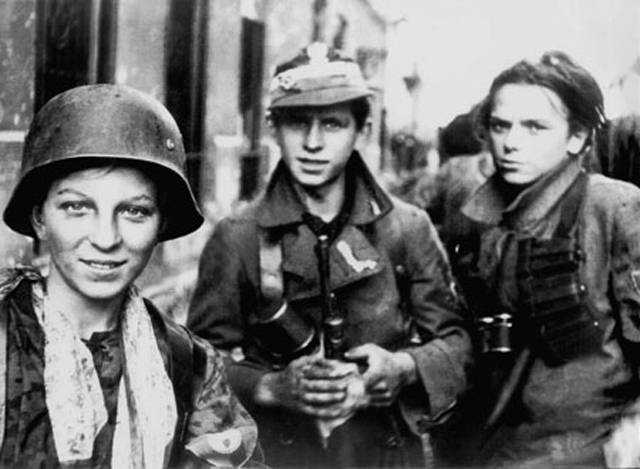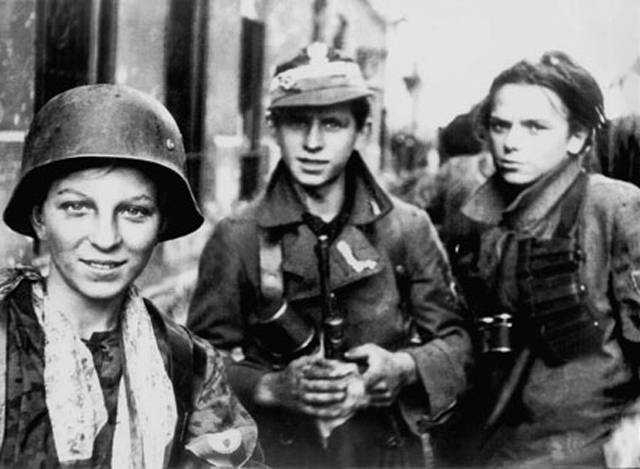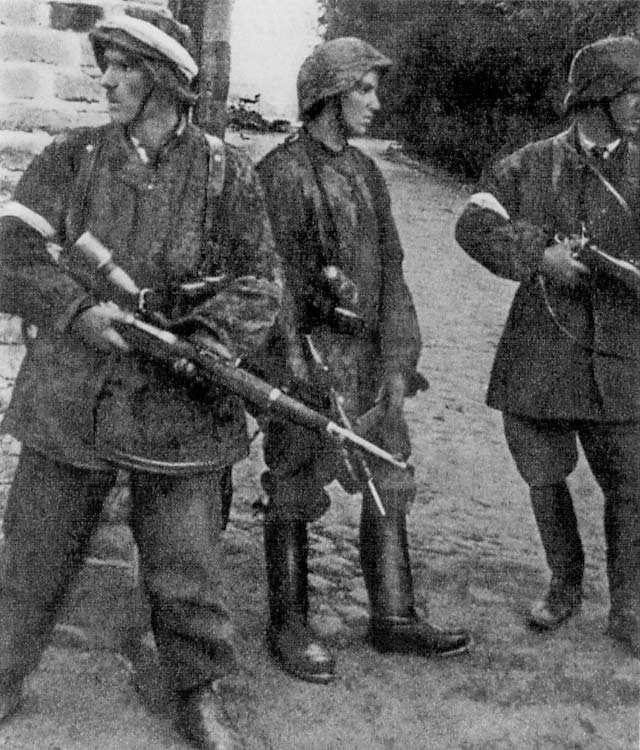Gray Ranks” was a codename for the underground paramilitary Polish Scouting Association during World War II.
The wartime organisation was created on 27 September 1939, actively resisted and fought German occupation in Warsaw until 18 January 1945, and contributed to the resistance operations of the Polish Underground State. Some of its members (Grupy Szturmowe — the Storm Groups) were among the Home Army’s best-trained troops. Though formally independent, the Gray Ranks worked closely with the Government Delegation for Poland and Home Army Headquarters. The Gray Ranks had their own headquarters, the Naczelnictwo, manned by five or six persons.
Since its organization in 1916, scouts within the Polish Scouting and Guiding Association (Związek Harcerstwa Polskiego, ZHP) had taken active part in all the conflicts Poland was engaged in around this time: Great Poland Uprising, Polish-Bolshevik War, Silesian Uprisings, and thePolish–Ukrainian War. After the German Invasion of Poland in 1939, the Nazis recognized the ZHP as a threat. Polish Scouts and Guides were branded as criminals and banned.
Under the leadership of Florian Marciniak, the ZHP carried on as a clandestine organization. The wartime Scouts evolved into the paramilitary Szare Szeregi (Gray Ranks), reporting up through the Polish underground state and the Armia Krajowa resistance.
The codename Szare Szeregi was adopted in 1940. It was first used by underground scouting in Poznań. The name was coined after an early action of the Polish Scouting Association, in which boy scouts distributed propaganda leaflets among Germans from Lithuania, Latvia and Estonia who had settled in the homes of Poles expelled to the General Government. To create confusion, the leaflets had been signed SS — later expanded to Szare Szeregi, a name that came to be adopted by the entire organization.
Older Scouts carried out sabotage, armed resistance, and assassinations. The Girl Guides formed auxiliary units working as nurses, liaisons and munition carriers. Younger Scouts were involved in so-called minor sabotage under the auspice of the Wawer organization, which included dropping leaflets or painting the kotwica sign on the walls. During Operation Tempest, and especially during the Warsaw Uprising, the Scouts participated in the fighting, and several Szare Szeregi units were some of the most effective in combat. The Gray Ranks also included the White Couriers, who between late fall 1939 and mid-1940 helped smuggle many persons out of Soviet-occupied southeastern Poland into Hungary.
In 1940, the Soviet Union executed most of the Boy Scouts held at Ostashkov prison.
In 1945 the ZHP restored its former name and returned to public existence. However, the communist authorities of Poland pressured the organization to become a member of the Pioneer Movement and eventually it was banned in 1949.
The Combat Schools (Bojowe Szkoły) comprised youngsters aged 15 to 17. They took part in “small-sabotage” operations. These included propaganda operations directed at the Poles, German civilians and German military units. The best-known operations were:
- Operation Wawer-Palmiry — a major propaganda campaign which included painting patriotic and anti-German slogans on walls (see also kotwica); distribution of leaflets, posters stickers, and fake issues of supposed German newspapers; intercepting German propaganda megaphones and using them to spread Polish propaganda; destroying German flags and other symbols; disrupting German events by setting off fire alarms; and, last but not least, stink-bombing German-operated movie theaters. Probably the best-known action was the removal of a German-language plaque that had been attached by the Germans to theNicolaus Copernicus Monument in Warsaw, claiming the astronomer for the German nation.
- Operation N — the distribution of propaganda newspapers and leaflets among German soldiers stationed in Poland.
- Operation WISS (Wywiad – Informacja Szarych Szeregów — Grey Ranks Intelligence) — an operation on behalf of Home Army intelligence, in which Combat Schools groups carried out surveillance of German military units and their movements. The information that was gathered was passed on to the Allies. The operation provided the Allies with complete lists of German units, their insignia and approximate complements, including units down to battalion size.
Other famous operations included marking street lamps as “Nur für Deutsche” (“Only for Germans”), implying that those who hanged people would themselves be hanged (from street lamps). Other operations occurred after the Germans began destroyingmonuments to Polish national heroes and historical personalities. These included a monument to Jan Kiliński, leader of an 18th-century Warsaw uprising against the Russians during the Kościuszko Uprising. The Germans dismantled the monument and placed it in the cellars of the former National Museum, for delivery to a German steel mill. The scouts were notified of where the monument was hidden and overnight marked the walls of the former museum, “People of Warsaw! I am here. Kiliński”.
As part of their secret training, the Combat Schools boys and girls prepared for service with the Home Army as members of commanders’ troops, communication units, and reconnaissance units. During the Warsaw Uprising, Combat Schools units in Warsaw’s Downtown District formed a company; in other districts, they formed platoons.
The Assault Groups (Grupy Szturmowe), comprising youngsters aged 17 and up, were directly subordinate to the Home Army’sKeDyw (Directorate of Diversion). The groups trained at secret NCO schools and officer schools for commanders of motorised and engineering units. Most members also studied at underground universities, to gain knowledge necessary to reconstruct Poland after the war. The best-known NCO schools included Warsaw’s Agricola.
The assault groups took part in “major sabotage”, including armed struggle against the occupiers. The assault groups formed the backbone of the Home Army’s special troops. They liberated prisoners from German prisons and transports, blew up railroad bridges, carried out executions ordered by special courts, and fought pitched battles against German forces.
The assault groups in Warsaw were organised into several battalions, including the famous “Baszta“, “Zośka“, “Parasol” and “Wigry“, which later took part in the Warsaw Uprising and were among the most notable and successful units on the Polish side. Other units, mainly in the Radom-Kielce area, joined the partisan units operating in the forests of the Świętokrzyskie Mountains.
Notable assault-group operations included:
- Operation Arsenal (March 26, 1943), the liberation of the gravely wounded Jan Bytnar and 24 other prisoners from a Gestapoconvoy
- Operation Schultz (May 6, 1943), the assassination of SS-Obersturmführer Herbert Schultz
- Operation Lange (May 22, 1943), the assassination of SS-Rottenführer Ewald Lange
- Operation Belt (August 1943 – February 1944), the destruction of thirteen German border outposts
- Operation Bürkl (September 7, 1943), the assassination of SS-Oberscharführer Franz Bürkl
- Operation Kutschera (February 2, 1944), the assassination of SS and Police Leader Franz Kutschera
- Storming and liberation of Gęsiówka concentration camp in Warsaw (August 5, 1944)


